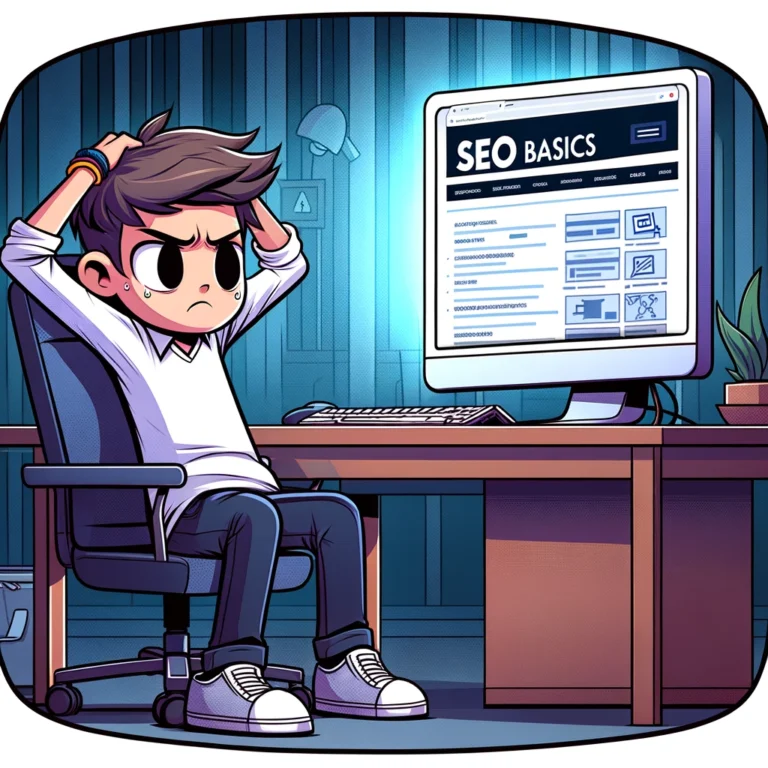In the dynamic world of digital marketing, Search Engine Optimization (SEO) stands out as a crucial strategy to enhance the visibility of websites. At the heart of SEO is the goal to attract more quality traffic, which not only boosts your site’s visibility but also increases the likelihood of converting visitors into customers. This article will delve into the basics of SEO and explain how traffic influences various aspects of your website’s search engine performance.
What is SEO?
Search Engine Optimization, or SEO, is a set of practices designed to improve the positioning of a website in search engine results pages (SERPs). The idea is to make your site more visible when people search for services or products related to your business in Google, Bing, and other search engines. Effective SEO involves optimizing both the content and structure of your site to make it more attractive to search engines.
The Importance of Traffic in SEO
Traffic is often considered a vanity metric by some marketers; however, when it comes to SEO, the quantity and quality of traffic your website receives can significantly impact your search engine rankings. Here’s why:
1. Signals of Relevance and Authority
Search engines aim to provide users with the most relevant results. When a website receives a high amount of traffic, it signals to search engines that the website is likely providing valuable content that appeals to users. This perceived relevance and authority can positively affect your site’s ranking.
2. User Engagement Metrics
Search engines also consider user engagement metrics such as bounce rate, pages per session, and average session duration to gauge a website’s value to its visitors. High engagement rates indicate that the site’s content is relevant to what searchers are looking for, which can lead to better rankings.
3. Data for Optimization
More traffic means more data. With a larger set of data from user interactions, you can better understand how visitors use your site, which pages they prefer, and what content keeps them engaged. This information is crucial for ongoing SEO efforts as it helps to refine strategies and optimize content more effectively.
How to Drive Traffic to Your Website
Driving traffic to your website involves several key SEO strategies. Here are some fundamental tactics:
Keyword Research
Identifying and targeting the right keywords is one of the first steps in a successful SEO strategy. Keywords should be relevant to your products or services and reflect the search terms your potential customers are using.
Content Creation
Content is king in the world of SEO. Creating high-quality, relevant content that addresses the needs and questions of your audience will attract more visitors. Regularly updated content is viewed more favorably by search engines and can drive repeated traffic back to your site.
On-Page SEO
This includes optimizing individual web pages to rank higher in search engines. It involves aligning specific elements like title tags, headings, content, and internal links with targeted keywords.
Off-Page SEO
Building backlinks from other reputable websites is crucial for increasing traffic. Links are a core component of the algorithm used by search engines to rank websites. A healthy backlink profile can significantly boost your SEO by showing that other sites consider your content as authoritative and reliable.
Technical SEO
Ensuring that your website is technically optimized is another crucial factor. This means improving site speed, mobile-friendliness, and making sure that search engines can easily crawl and index your site.
Local SEO
For businesses with a physical presence, local SEO can drive traffic by optimizing your site for geographic-specific searches. This includes optimizing your Google My Business listing and ensuring that local listings are consistent and accurate.
In the realm of SEO, traffic is not just a number—it’s a vital part of how search engines judge the quality and relevance of your site. By understanding the role of traffic and employing basic SEO strategies, you can enhance your site’s visibility, draw in more visitors, and ultimately, achieve your business goals. Remember, SEO is a long-term strategy, but with persistence and dedication, the traffic will follow.

The Impact of Traffic on SEO Metrics
Understanding the impact of traffic on SEO involves more than just counting the number of visitors. Here, we’ll break down how different types of traffic can influence specific SEO metrics and why these metrics matter.
Organic Search Traffic
Organic search remains a cornerstone of most SEO strategies. This is traffic that comes to your website as a result of unpaid search results. More organic traffic is often a sign that your SEO efforts are paying off. The quality of this traffic is crucial because it reflects how well your keywords and content align with user intent.
Direct Traffic
Direct traffic occurs when visitors enter your website URL directly into their browser or through a bookmark. High levels of direct traffic can indicate strong brand recognition and customer loyalty, which are also favorable signals to search engines about the reliability and authority of your website.
Referral Traffic
This is traffic that arrives at your site from other websites which have linked to your content. Referral traffic is powerful for SEO as it directly influences how search engines assess the authority and relevance of your site. A diverse profile of high-quality backlinks tells search engines that your content is valued by others, enhancing your site’s credibility and ranking potential.
Social Traffic
Although social media signals are not a direct ranking factor for search engines, the traffic you receive from social media can have indirect benefits on your SEO. Increased visibility in social networks can lead to more backlink opportunities as more people discover and reference your content.
Optimizing for High-Quality Traffic
Not all traffic is created equal. The quality of traffic can significantly impact your site’s ability to benefit from these visitors. Here’s how to ensure that the traffic driving to your site is of high quality:
Targeting the Right Audience
Understanding your audience and tailoring your content to meet their needs is essential. Use analytics tools to monitor demographic information and visitor behavior to refine your SEO strategies, ensuring that you attract the right kind of traffic that is more likely to engage with your site and convert.
Creating Valuable Content
Develop content that provides value to your audience. Whether it’s solving a problem, providing insightful information, or offering entertainment, valuable content encourages visitors to stay longer and engage more deeply with your site, improving SEO metrics like time on site and pages per session.
Using Analytics to Refine SEO
Utilize web analytics to track the sources of your traffic and how visitors interact with your site. Insights gained from analytics can help you fine-tune your SEO tactics, from adjusting your keyword strategy to improving user experience, ensuring that you attract more high-quality traffic.
Mobile Optimization
With the increasing prevalence of mobile devices, ensuring your website is optimized for mobile is no longer optional. Mobile optimization can impact both your site’s user experience and its SEO performance. A mobile-friendly site encourages more visits and longer engagement, which are positive indicators to search engines.
Measuring SEO Success Through Traffic Analysis
Measuring the impact of traffic on your SEO efforts involves looking at several key performance indicators (KPIs):
Conversion Rate
This measures how well your site turns traffic into desired actions, like sales, sign-ups, or other goals. A high conversion rate often correlates with effective SEO and high-quality traffic.
Bounce Rate
This metric shows the percentage of visitors who leave your site after viewing only one page. A high bounce rate might indicate that your site’s content or user experience is lacking, which can hurt your SEO efforts.
Click-Through Rate (CTR)
CTR from search results to your website is a critical metric. A high CTR means that your search result snippets (title, description, URL) are compelling and relevant to search queries, which can also improve your rankings.
Conclusion
Traffic is a multifaceted component of SEO that extends beyond mere numbers. It involves attracting the right visitors and ensuring they have a positive interaction with your site, reflecting well on your search rankings. By focusing on generating high-quality traffic and closely monitoring related metrics, you can maximize your SEO efforts and boost your site’s visibility and performance in search engine results. With diligent application of the strategies discussed, traffic will not only increase but also enhance every facet of your site’s search engine performance.
References
- “SEO Basics: Beginner’s Guide to SEO Success” – Ahrefs.com
- “The Beginner’s Guide to SEO” – Moz.com
- “Google’s Search Engine Optimization Starter Guide” – Google



